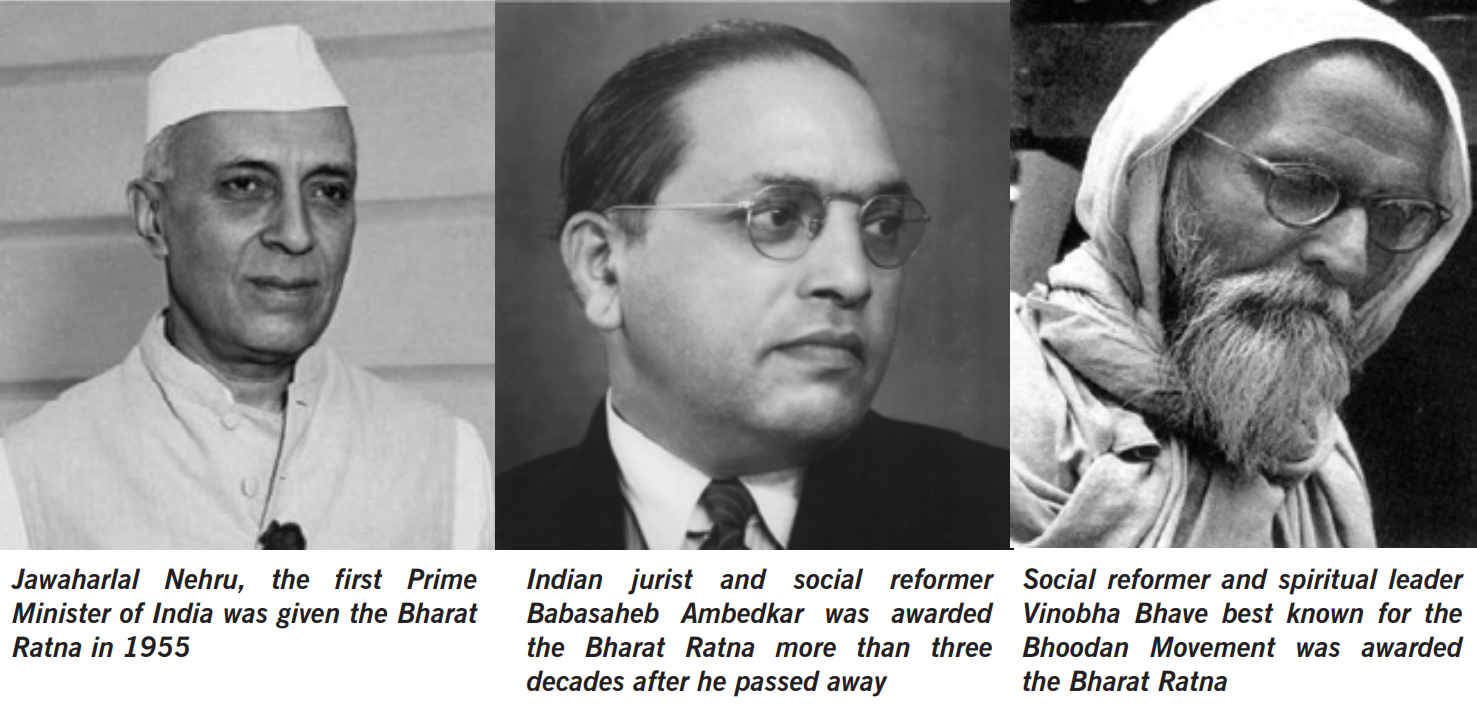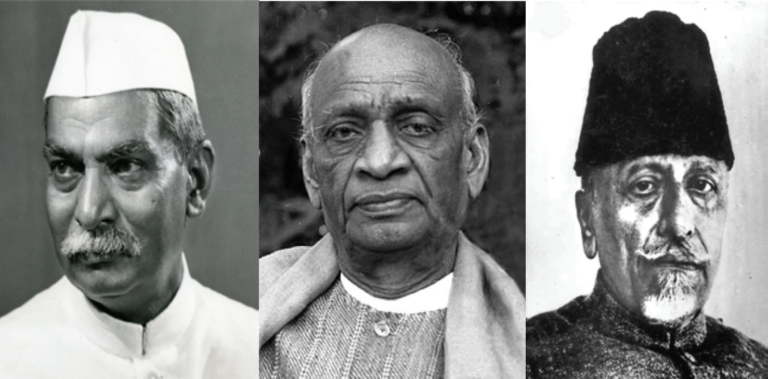Ruchi Verma takes a look at the titans on whom the country’s highest civilian award of Bharat Ratna was conferred and explains the stellar role they played in shaping India’s socio-political landscape and how they dedicated their lives to social causes and humanitarian work. They embodied the spirit of the award and their legacy continues to serve and guide future generations in the nation’s progress.
The Bharat Ratna, India’s highest civilian award, has been bestowed upon many distinguished individuals who have made significant contributions to the nation. Bharat Ratna was constituted in 1954.
The first recipients of this prestigious award were C. Rajagopalachari, Sarvepalli Radhakrishnan and C. V. Raman, who were honoured in 1954. These individuals played a pivotal role in shaping India’s socio-political landscape and dedicated their lives to social causes and humanitarian work, in their own way.
The statesman
The last Governor-General of the Dominion of India and the former Chief Minister of Tamil Nadu – C. Rajagopalachari was a statesman, independence activist, historian, writer and lawyer. He was the founder of the Indian political party, the Swatantra Party.
His contributions to the Indian independence movement and his efforts in establishing a democratic government in India post-Independence have been instrumental in shaping the political landscape of the country. The statesman had strongly objected to the use of nuclear weapons and vehemently advocated for disarmament and world peace.

He was one of the earliest supporters of Mahatma Gandhi and later joined the Indian National Congress to further the freedom struggle. He was actively involved in the agitations against the Rowlatt Act, the Non-Cooperation movement and the Civil Disobedience movement.
A scholar and educator
Sarvepalli Radhakrishnan served as India’s first Vice-President (1952 – 62) and second President (1962 – 67). A philosopher and a scholar, Radhakrishnan was a strong advocate of education. His birthday, 5th September, is today celebrated as ‘Teachers’ Day’ to honour his contributions to the field of education and philosophy that have greatly impacted the society.
He was India’s second ambassador to the Soviet Union, a position he served from 1949 to 1952. Additionally, he was also the Vice Chancellor of Banaras Hindu University from 1939 to 1948 and the second Vice Chancellor of Andhra University from 1931 to 1936.
Born in Tiruttani of North Arcot district in the erstwhile Madras Presidency (now in Tiruvallur district of Tamil Nadu), his family hailed from Sarvepalli village in Nellore district of Andhra Pradesh. He was a strong proponent of a secular vision of India.
He had also supported and sponsored the Peoples’ World Convention (PWC) along with Albert Einstein. The PWC was held in Palais Electoral, Geneva, Switzerland in 1950-51. He served as a member of UNESCO’s Executive Board and headed the Indian delegation from 1946 to 1951 and became a member of the Indian Constituent Assembly during this period.
The Raman Effect
Renowned physicist C. V. Raman who was widely known for his work on the scattering of light and the discovery of the effect, better known as Raman Scattering or Raman Effect was also bestowed with the Bharat Ratna in 1954.
He mainly worked in the field of atomic physics and electromagnetism and was awarded the Nobel Prize in Physics in 1930. He was the first Asian to receive a Nobel Prize in any branch of science. His scientific contributions have not only put India on the global scientific map but also inspired many young minds to pursue science.
Born in 1988 in a Tamil Brahmin family, Chandrasekhara Venkata Raman was a prodigy as he completed his higher secondary education at the age of 13 years. While he was still a graduate student, his first research paper on diffraction of light was published in 1906. At the age of 19, he joined the Indian Finance Service in Calcutta as Assistant Accountant General.
Politician and statesman
Jawaharlal Nehru, the first Prime Minister of India, was a central figure in Indian politics before and after Independence. He was a key player in the Indian independence movement and the drafting of the Indian Constitution. He was given the Bharat Ratna in 1955.
Bhimrao Ambedkar, popularly known as Babasaheb Ambedkar, was an Indian jurist, economist, politician and social reformer and was awarded the Bharat Ratna posthumously in 1990, more than three decades after he passed away.
Dr Ambedkar campaigned against social discrimination towards the untouchables (Dalits) and supported the rights of women and labour. As the principal architect of the Constitution of India, he ensured that social justice was enshrined in the constitution.
Vallabhbhai Patel, also known as Sardar Patel, played a key role in the country’s struggle for Independence. He was instrumental in the integration of over 500 princely states into the Indian Union. His uncompromising efforts towards consolidation of the country earned him the title ‘Iron Man of India’. Sardar Patel was the first Deputy Prime Minister of India and passed away in 1950. He was given the Bharat Ratna posthumously in 1991 as a tribute to his contribution to the nation.
Dr. Rajendra Prasad was the first President of India. An influential leader in the Indian Independence Movement, Prasad was a close associate of Mahatma Gandhi. He was highly respected for his notable contributions to the Constituent Assembly. He was given the prestigious award in 1962, the same year he retired from public life because of his deteriorating health.
A senior leader of the Indian National Congress and the first Minister of Education in the Indian government, Maulana Abdul Kalam Azad’s contribution to establishing the education foundation in India is recognised by celebrating his birthday as ‘National Education Day’ across India. He was given the Bharat Ratna posthumously in 1992. Maulana Azad was born on 11 November 1888 in Mecca, then a part of the Ottoman Empire (now Saudi Arabia). His father was a Muslim scholar of Afghan ancestry.
Social uplift
Lal Bahadur Shastri, the second Prime Minister of India, played a pivotal role in shaping India’s political landscape. His slogan ‘Jai Jawan Jai Kisan’ during the Indo-Pakistan War of 1965 echoed the importance of soldiers and farmers to the nation’s progress. His tenure witnessed significant agricultural growth, leading to India becoming self-sufficient in food grain production.
He was in Mughalsarai on 2 October 1904, studied in East Central Railway Inter College which he left to join the Non-cooperation Movement. In 1928, he became an active member of the Indian National Congress when called upon by Gandhi. He died in Tashkent, Uzbekistan (then Soviet Union) on 11 January 1966, only a day after signing a peace treaty to end the 1965 Indo-Pakistan War. He was awarded India’s highest civilian honour posthumously in 1966.
Vinoba Bhave, a social reformer and spiritual teacher, is best known for the Bhoodan Movement. He worked tirelessly for land rights for the poor and was instrumental in persuading landowners to voluntarily give a portion of their land to landless farmers.
He was an advocate of non-violence and human rights and was often called Acharya. An eminent philosopher, he translated Gita into Marathi language titled ‘Geetai’. He was born Vinayak Bhave on 11 September 1895 in a small village called Gagoji (present-day Gagode Budruk) in Kolaba in the Konkan, Maharashtra. He was awarded the Bharat Ratna posthumously in 1983.
These early recipients of the Bharat Ratna have left an indelible mark on India’s socio-political landscape. Their contributions have not only shaped the nation but also significantly impacted the lives of the common man.
They dedicated their lives to the service of the nation and humanity, embodying the spirit of the Bharat Ratna. Their legacy continues to inspire future generations to strive for excellence and contribute to the nation’s progress.

